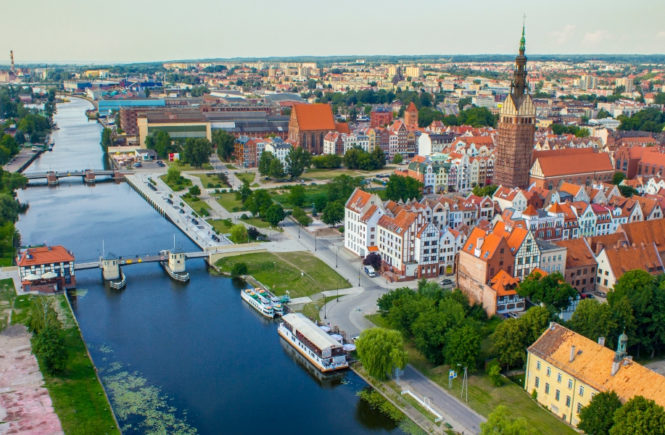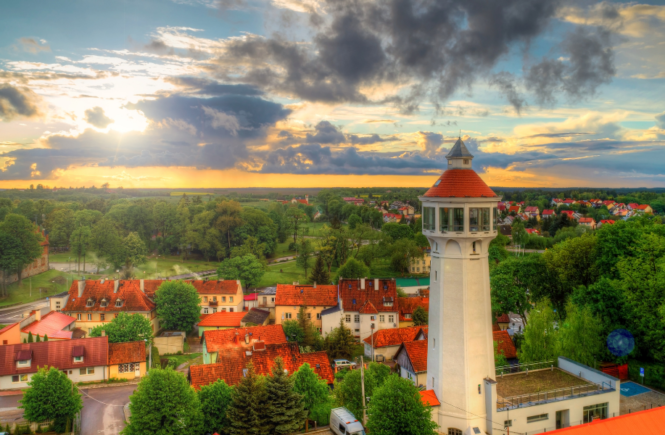Elblag is one of the oldest Polish cities situated on the border of two lands-The Elblag Upland and Żuławy Wiślane, at the mouth of the River Elblag on the Vistula lagoon. Elblag has a complex history because of its overlapping German and Polish influences. Despite almost total destruction of the city in World War II, the Old Town of Elblag has been rebuilt in a retroversion style with a mixture of XXI century architecture.
El Art Gallery is located in an old Dominican Church that has seen a lot of changes. In the 1960s and 70s the church was rebuilt and transformed into a centre of modern art. The combination of a new building function with its historic indoor setting of an original Gothic church is inspirational. There are tombstones and epitaphs on the church walls and floors. Various exhibitions, performances, workshops, concerts and festivals take place in El Art Gallery. In the world of European art Elblag became famous for regular artist get-togethers between 1965-1973 within the framework of Spatial Forms Biennale. Thanks to that period , there still are 50 metal spatial forms in different parts of the city and Elblag, in effect an open-air art gallery.
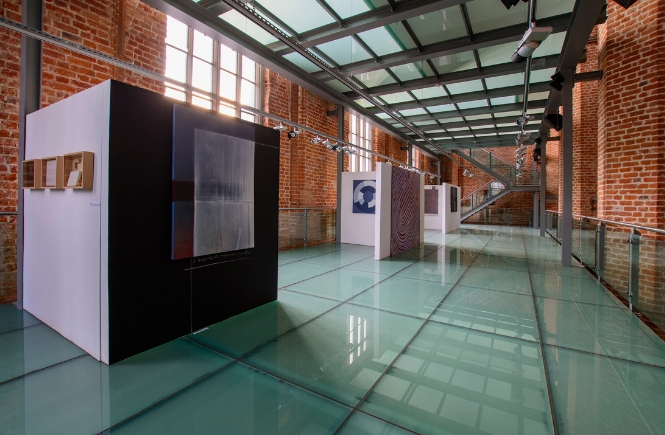
The Archeology and History Museum is one of the most modern and highly-ranked museums of this type in Europe. The collection can be admired in two historic buildings which used to be parts of the Teutonic Knight castle. Thanks to excavation works in the Old Town the museum houses articles made of ceramic, metal, wood, leather, amber and glass. A collection of medieval music instruments, pilgrim signs and wax boards which are unique on a world scale. These artifacts show how wide and the extensive the local contacts were a thousand years ago.
Truso was a commercial trading centre established by the Vikings on the shores of Lake Drużno in VIII-X century. At one time Truso was as significant in trade as the Birka settlement near Stockholm and Hedeby in Jutland. From Truso you can trace local trade connections with other parts of Europe and Arabic countries.
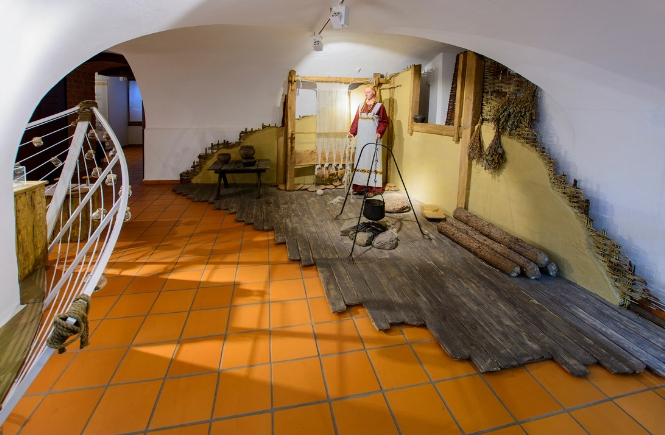
St. Nicholas Cathedral is one of the oldest sacral buildings in Elblag. Over the centuries it has been altered a few times because of war, natural depreciation and the Great Fire of 1777 after lighting hit the tower. Some of the most valuable works of art you can see today is a bronze, baptismal font created by Master Bernhauser in 1387 and altars funded by Elblag craftsman guilds from the same period. You can see a panorama of Elblag and its surroundings from the Cathedral Tower, In good weather Malbork Castle, the Vistula Spit, Elblag Uplands the and the nature reserve at Lake Drużno can be seen.
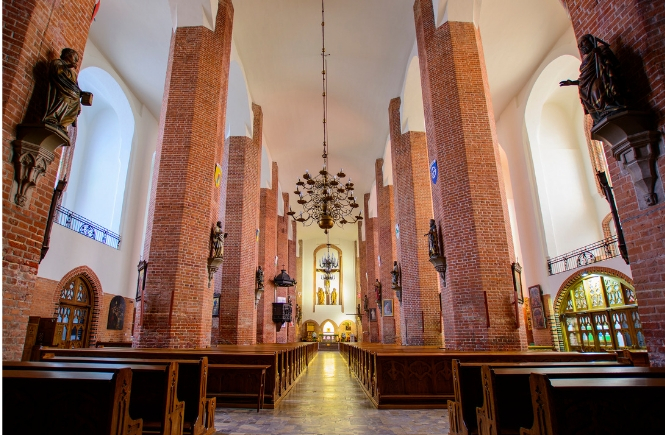
The Market Gate [Brama Targowa] is the most characteristic monument in the old town. It was originally a part of the town’s first fortifications. However, the clock and dome were damaged by a shell in 1945. In the 70s during rebuilding work, the baroque tower was not rebuilt leaving the Market Gate back in its homogenous gothic style. Since 2006 the Market Gate has been opened as a tourist information point during the summer months.
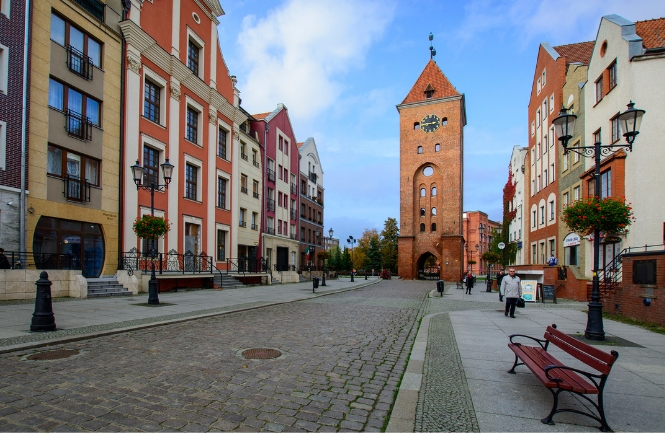
The High and Low drawbridges over the River Elblag were reconstructed on the basis of historic photos. While standing on them you can admire the Old town, St. Nicholas Cathedral and life on the river. Near the High bridge on Granary Island in the place of the old Exchange today there is a ‘Specjal pub’ where you can try regional beers from the local Elblag brewery.
‘Bażantarnia’ forest park which is also informally called ‘little Bieszczady’ due to its similarity to the mountainous region. A favourite place to relax for the locals, the landscape is studded with opulent hills and mysterious ravines. In the park there is a historic band stand where regular concerts take place in summer, there are paths for walking, mountainbiking , horse riding, jogging ,cross-country and down-hill skiing and snowboarding if the conditions allow in winter. Enthusiasts of ice-skating have a choice between an indoor and outdoor ice-rink to go skating in. The outdoor facility was awarded ‘Sporting Facility of the year 2017; in the competition ‘The builder of Polish Sport’.
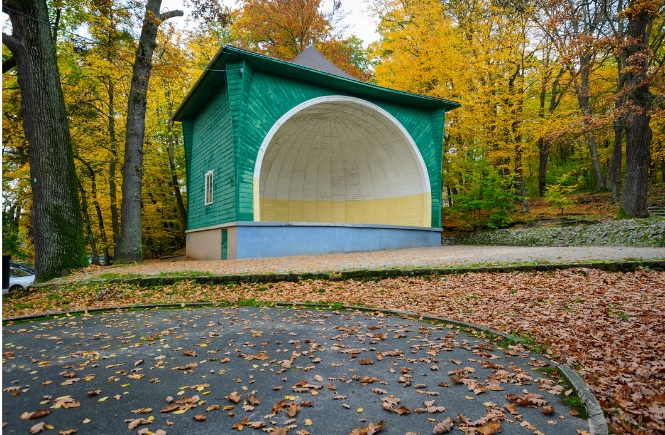
While talking about Elbląg you cannot forget about a wonder of the hydro- technological world, The Elblag Canal Sluice System. This is one of the few such lock systems in the world in operation, a waterway with a system of ramps and locks which ships overcome a 100 metre water difference between Elbląg and Ostróda.
More information on: www.turystyka.elblag.eu
photo: Bartosz Rybaczewski
Local guides share the secrets of Elblag
Elbląg is the oldest city in the region, and In addition to that in Medieval Times, it belonged to the Hanseatic League which was then an alliance of important trading cities. Thanks to that Elblag has had many connections with important and interesting people throughout its history.
One of them was Georg Friedrich Handel the most prominent composer of late baroque music who came to Elblag in 1737 to commemorate the 500th anniversary of the founding of Elblag and he also took part in the premiere of his own self-composed opera about the Master of the Teutonic rder, Herman von Balk.
Another well-known name with local connections is the present German Chancellor Angela Merkel who has her roots in Elblag. Her great-grandparents , Emma and Emil Drange were buried in Elblag’s Lapidarium graveyard.
Ferdynand Gottlob Schichau also known as the ‘A Prince of Work’ or sometimes ‘Rockefeller of the East’ was an industrialist and the founder of the biggest company producing steam locomotives from Szczecin to Kłajpeda.
Elbląg was the place where Franz Komnick opened his first car factory in the east in 1906 and, his son Otto won prestigious awards driving cars ‘which were produced by his father’ in rallies in Russia.
St. Nicholas’s Cathedral is worth visiting as it is the most famous and important place of historical interest in town . Its construction started at the beginning of XIII century, the tower which is 97 metres high is the highest tower not only in Varmia and Masuria but also in the part of Poland located east of the River Vistula. A viewing point in the church tower is open to the public at an altitude of 67 metres.
If you wish to learn more about the secrets of Elblag, feel invited to meet some guides from Elbląg’s local branch of PTTK www.pttk.elblag.com.pl
Leszek Marcinkowski & Kamil Zimnicki

